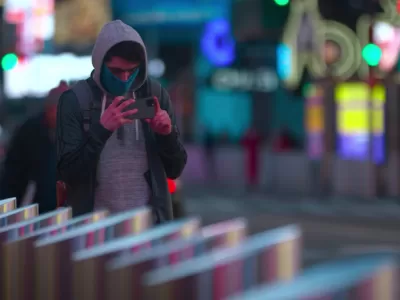"Cities of all sizes may soon look less alluring, if drastic drops in income, sales and tourism tax revenue leave gaping holes in budgets," according to this article, which encapsulates a popular school of thought as the pandemic rages.

Sabrina Tavernise and Sarah Mervosh write an article for The New York Times that generated a lot of discussion since its publication because it speaks to one of the big points of debate about the future of cities and development in the wake of the coronavirus, namely, whether people will move away from the city in waves as a result of the pandemic.
The potential for massive demographic shift away from cities, according to the article, can be traced to the affordability challenges that existed in many large, successful cities before the coronavirus outbreak. The following paragraph pretty much sums up one school of thought that has emerged about how the pandemic will change the United States:
The pandemic has been particularly devastating to America’s biggest cities, as the virus has found fertile ground in the density that is otherwise prized. And it comes as the country’s major urban centers were already losing their appeal for many Americans, as skyrocketing rents and changes in the labor market have pushed the country’s youngest adults to suburbs and smaller cities often far from the coasts.
According to the article, the current effects of the stay-at-home orders in place all over the country, the fear of contagion, and additional concerns, like the long-term budgetary pain expected to overwhelm local and state budgets later this year, could inspire city dwellers to seek less densely populated areas.
Toward the end of the article, a few prominent voices, like Jed Kolko and Ed Glaeser, are offered a chance at rebutting the premise of the article. Moving is less common in uncertain economic times, according to Kolko, and cities are much healthier than in the past, according to Ed Glaeser.
For an indication of which way the country is headed, Tavernise and Mervosh cite the situation in Boca Raton, Florida where real estate brokers reports a major increase in homebuying interest from residents currently living in the Northeast.
FULL STORY: America's Biggest Cities Were Already Losing Their Allure. What Happens Next?

Planetizen Federal Action Tracker
A weekly monitor of how Trump’s orders and actions are impacting planners and planning in America.

Congressman Proposes Bill to Rename DC Metro “Trump Train”
The Make Autorail Great Again Act would withhold federal funding to the system until the Washington Metropolitan Area Transit Authority (WMATA), rebrands as the Washington Metropolitan Authority for Greater Access (WMAGA).

The Simple Legislative Tool Transforming Vacant Downtowns
In California, Michigan and Georgia, an easy win is bringing dollars — and delight — back to city centers.

The Small South Asian Republic Going all in on EVs
Thanks to one simple policy change less than five years ago, 65% of new cars in this Himalayan country are now electric.

DC Backpedals on Bike Lane Protection, Swaps Barriers for Paint
Citing aesthetic concerns, the city is removing the concrete barriers and flexposts that once separated Arizona Avenue cyclists from motor vehicles.

In These Cities, Most New Housing is Under 441 Square Feet
With loosened restrictions on “micro-housing,” tiny units now make up as much as 66% of newly constructed housing.
Urban Design for Planners 1: Software Tools
This six-course series explores essential urban design concepts using open source software and equips planners with the tools they need to participate fully in the urban design process.
Planning for Universal Design
Learn the tools for implementing Universal Design in planning regulations.
Smith Gee Studio
City of Charlotte
City of Camden Redevelopment Agency
City of Astoria
Transportation Research & Education Center (TREC) at Portland State University
US High Speed Rail Association
City of Camden Redevelopment Agency
Municipality of Princeton (NJ)





























